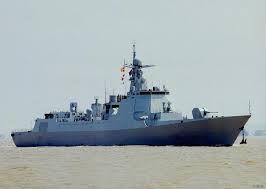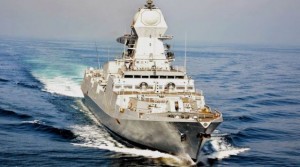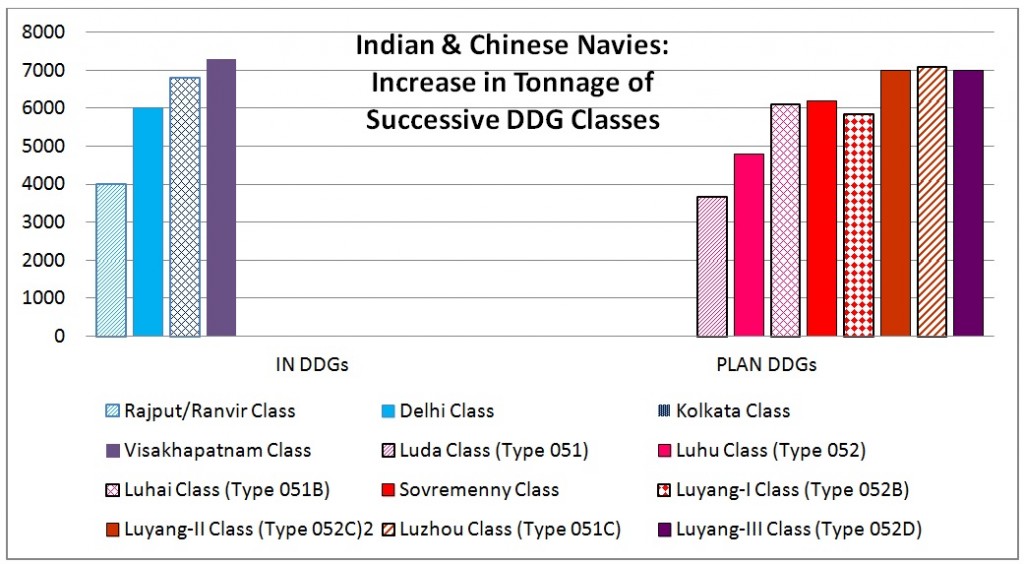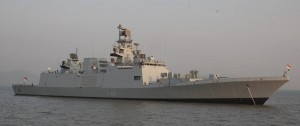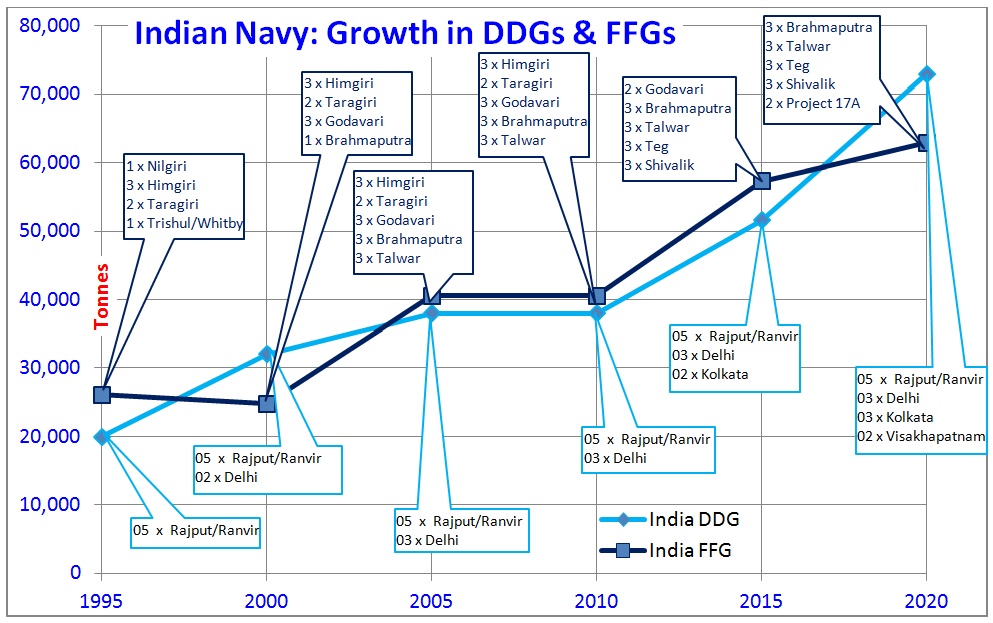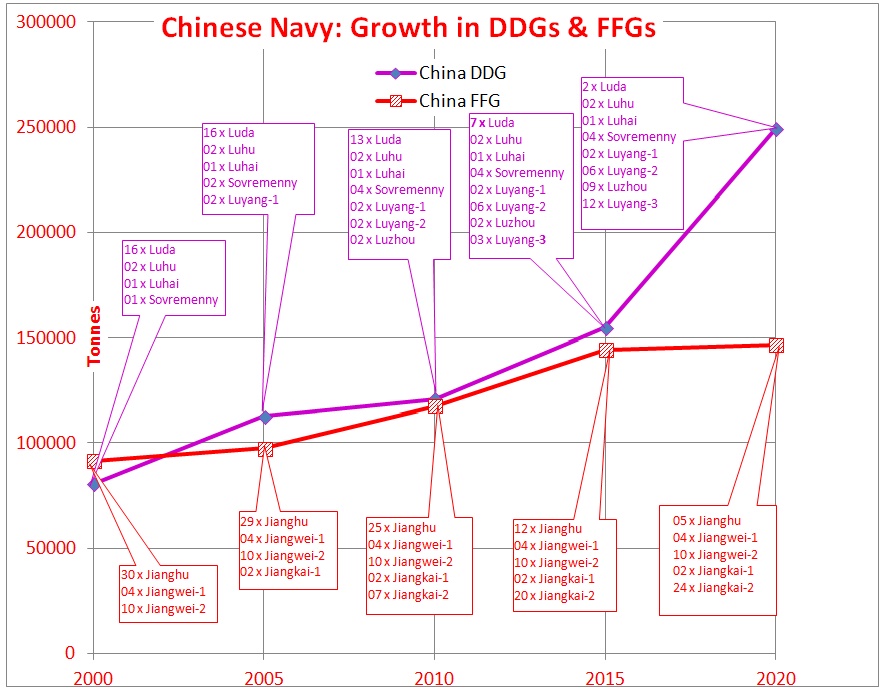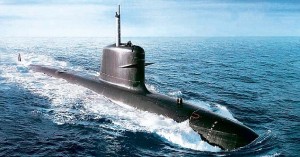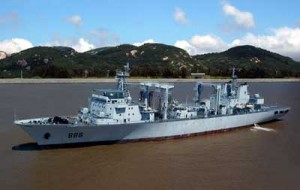By Conor M. Kennedy and Andrew S. Erickson
This series on the leading maritime militias of Hainan Province began by examining the “rights protection” efforts of Sanya City’s maritime militia, whose exploits have given them a prominent position among the province’s irregular sea forces. Discussions about the Sanya City maritime militia are still ongoing as we watch their development. Next came our evaluation of the historical legacy of Danzhou’s maritime militia, which directly demonstrated the value of irregular forces in naval warfare during the 1974 Paracels Sea Battle. This third installment in the series is part one of a two-part in-depth look at the maritime militia of Tanmen.
Tanmen Fishing Harbor is a small fishing port on the eastern shore of Hainan Island. It is home to one of China’s best-known maritime militia units, the Tanmen Maritime Militia Company (潭门海上民兵连). This irregular force receives disproportionate media coverage stemming largely from its involvement in numerous incidents with foreign actors at sea, most notably the April 2012 Scarborough Shoal Incident between the People’s Republic of China (PRC) and the Philippines. Since its founding in 1985, Tanmen has received numerous accolades as an “advanced militia unit” from the government and military on all levels. Tanmen’s fame spread further after Chinese President Xi Jinping’s high-profile visit on the first anniversary of the incident. Xi encouraged Tanmen’s maritime militia to build larger vessels, collect information in distant waters, master modern equipment, and support “island and reef” development. The extent of Chinese attention to this fishing village merits a deep-dive analysis to determine what is happening on the ground there, and what kind of maritime militia capabilities are resulting.
Some of Tanmen’s importance to the PRC stems from the wealth of historical artifacts and other evidence China possesses that allegedly support claims that Tanmen fishermen were the earliest community to discover and sustain continuous exploitation of the Paracel and Spratly Islands. Numerous reports of Tanmen fishermen having been detained or attacked by foreign states also support a growing Chinese narrative of the victimization of Chinese fishermen in the South China Sea. This narrative justifies enhanced ‘defensive’ activities by Chinese maritime forces operating there. Contributions from fishing communities such as Tanmen’s to China’s overall posture in the South China Sea bolsters domestic Chinese rationale for regaining lost “blue territory” (蓝色国土) and “maritime rights and interests” (海洋权益). Tanmen Village is likewise the future site of China’s South China Sea Museum and the South China Sea Base for the State Administration of Cultural Heritage’s Undersea Cultural Heritage Protection Center. Both institutions will likely be dedicated to bolstering China’s historical evidence to support its claims of sovereignty over the islands of the South China Sea and resource rights in those waters. The latter also has a stated purpose of “promoting maritime industries, shoreline protection and development, utilization and conservation of marine resources, marine service systems, and the implementation of the overall national marine economic development strategy.”
Central to furthering these interests are irregular units including the Tanmen Maritime Militia Company. Its history exhibit, located in its headquarters, houses artifacts documenting historical presence in the South China Sea by the forefathers of present-day militia members. These include navigation logs, compasses, and diving gear. Tanmen’s maritime militia activities began well before the present company’s official establishment in 1985. Previously a more loosely-organized fishermen militia, it became an official militia company when the PRC promulgated new guidelines for developing fisheries in distant waters and opened up the oceanic fishing industry to privatization. A contingent from this new organization was led initially by its first commander, Huang Xunmian, to the Spratlys, thereby becoming the first organized Tanmen fleet for Spratly development. Huang became a major part of the militia movement to mobilize Tanmen fishermen to build bigger vessels and venture to the Spratlys. By the early 1990s, the company included 150 militiamen and 21 vessels. Today it continues to expand under the current political agenda of transforming China into a “maritime power.”
Chinese media coverage of Tanmen fishermen often states that a large portion of incidents in the South China Sea between Chinese fishermen and foreign states is attributable to the Tanmen fishermen and maritime militia, whose members resolutely oppose “foreign encroachment.” The deputy station chief of the Qionghai City Fisheries Management Station told reporters in 2012 that 90% of the Chinese fishing vessels visiting the Paracels and Spratlys are from Tanmen Harbor, the remainder from Sanya City (also in Hainan Province) or Guangdong Province. While that particular claim is difficult to verify, the number of tense encounters between Tanmen fishermen and militia and the maritime forces of other South China Sea states—particularly the Philippines—certainly helps illustrate the point. Below is a brief, non-exhaustive list of events within the past three decades involving Tanmen fishing vessels, documenting their constant presence and activities in disputed waters and the resulting encounters, and periodic altercations, with other claimant states’ maritime forces. Of note, the incidents listed are as reported in the Chinese press. Instances of provocations by Tanmen fishermen or Chinese law enforcement vessels are therefore not included.
Timeline: Incidents and Other Events involving Tanmen Fishermen/Maritime Militia
Based on accumulated reports on Tanmen fishing vessels, the below list is by no means complete. Chinese media often reports that hundreds of incidents have occurred.
1985, August – First Tanmen maritime militia trip to Spratlys
After the founding of the militia company in August 1985 and the relaxing of China’s fisheries policies, company leader Huang Xunmian (黄循绵) led a group of 100 fishermen on five fishing vessels on their first trip to the Spratlys.
1989, 13 April – Near Philippine-occupied Thitu Island (中业岛):
Fishing vessel Qionghai 00224 and three fishermen—Huang Changbiao (黄昌标), Yu Yeyou (郁业友), and Yu Yexuan (郁业轩)—are arrested by Philippine authorities.
1989-95 – Chinese-occupied Spratly features:
A number of Tanmen maritime militia work in coordination with the PLA over the years on multiple-month trips to erect the first generation of structures on Chinese-occupied Spratly features. These included stilted shacks, sovereignty markers, piers, and helipads.
1993 – Somewhere in the Spratlys:
Qionghai 00417 is attacked by non-uniformed armed men, resulting in the deaths of four Tanmen fishermen. Tanmen fisherman Hu Xingliang (胡兴良) reported that they were speaking Tagalog, the language of the Phillipines.
1995, 25 March – Mischief Reef (美济礁):
Four of the Tanmen Maritime Militia Company’s fishing vessels with 62 fishermen aboard, working near Mischief Reef, are arrested by Philippine authorities. Platoon leader Wang Qiongfa (王琼法) and four other militia members maintain group solidarity despite strong Philippine attempts to coerce confessions from the Chinese fishermen to violating Philippine waters.
1998, 11 January – Scarborough Shoal (黄岩岛):
Tanmen Maritime Militia squad leader Chen Zebo (陈则波), captain of Qionghai 00372, and Tanmen fishing vessel Qionghai 00473 and its captain Chen Yiping (陈奕平) (altogether 22 fishermen) are arrested by the Philippine Navy for poaching, sent to Subic Bay Coast Guard Station, and held there for 5-6 months.
1998, March – Scarborough Shoal:
Trawlers Zhongyuanyu (中远渔) 313 and 311, and their ~29 fishermen, are detained by a Philippine naval patrol for possession of explosives and endangered coral.
1999 May – Scarborough Shoal:
Chen Zebo’s ship is rammed and sunk by the Philippine Navy, sending 11 crewmembers into the water. Chen and two others are picked up and sent to jail, subsequently released in July.
2000, 26 May – Off the coast of Palawan:
Tanmen fishing vessel Qionghai 01068 encounters a Philippine Coast Guard Vessel. Philippine Coast Guard fires on Qionghai 01068, killing captain Fu Gongwu (符功武); and detains the rest of the crew.
2001 – Near Thitu Island:
Captain Feng Xinyi (冯信义) and three other fishermen aboard Qionghai 00389 are arrested by Philippine authorities.
2002 – Scarborough Shoal:
Qionghai 09016’s owner Lu Haichuan (卢海川) and the 22 fishermen aboard were arrested by Philippine authorities and jailed for 8 months in Palawan.
2006, April – South Shoal (南方浅滩):
Chen Zebo’s nephew Chen Yichao (陈奕超) was on Qionghai 03012 in the Spratlys at South Shoal when on 26 April 2006 an armed vessel of unknown origin attacked and killed four fishermen and injured 3 more.
2007, August – Second Thomas Shoal (仁爱礁):
Qionghai 01039, operated by Mo Taifu (莫太福), was pursued and fired upon by Philippine authorities.
2007, September – Somewhere in the Spratlys:
Qionghai 01038, owned by Mo Taifu, was intercepted and inspected by Malaysian authorities.
2012, 10 April – Scarborough Shoal Standoff:
12 Tanmen fishing boats at Scarborough Shoal encounter Philippine Naval Vessel Gregorio Del Pilar. Six fishing vessels were outside the lagoon at the time, including that of Tanmen Maritime Militia Company Deputy Commander Wang Shumao (王书茂), who led an unsuccessful effort to block Philippine fishing vessels from approaching the shoal.
The other six fishing vessels present inside the lagoon, two of which are confirmed maritime militia vessels, were trapped when Philippine forces blocked the lagoon’s opening. These boats were subsequently boarded by Philippine troops:
- Qionghai 03026 – One of two boats present under the direct command of Tanmen Militia Squad Leader Chen Zebo. Returned to Scarborough Shoal after initial standoff.
- Qionghai 09099 – Under direct command of Tanmen Militia Squad Leader Xu Detan (许德谭). Returned to Scarborough Shoal after initial standoff.
- Qionghai 02096 – Owned by Yu Ning (郁宁), Captain is Li Chengduan (李成端), Yu reported the incident to the Tanmen Border Defense Station.
- Qionghai 03065 – Owned by Zhao Xuxian (赵绪贤); Zhao Shisong (赵市松) is captain. Returned to Scarborough Shoal after initial standoff.
- Qionghai 05668 – A 300-ton vessel owned by Fu Mingyan (符名燕), its captain is Li Qiongmei (李琼美). Ship had 16 crewmen, 12 conducting underwater clam harvest. Returned to Scarborough Shoal after initial standoff. Qionghai 03889 – Captain is Chen Yiping (陈奕平), (also detained in 1998). Returned to Scarborough Shoal after initial standoff.
2012, May – Triton Island (中建岛):
Possible maritime militia vessel Qionghai 02067 is hired to carry “official” engineering surveyors and stone boundary markers to Triton Island. Media coverage states that crew members were skittish during the Chinese journalist’s inquiry.
2014 Spring – Half-Moon Shoal (半月礁):
Chen Zebo’s older brother Chen Zelong (陈则龙) encounters Philippine authorities.
2014, 6 May – Half-moon Shoal:
Two Tanmen fishing vessels are caught by Philippine personnel poaching endangered turtles near Half Moon Shoal on 6 May 2014. One of the fishing vessels, Qionghai 03168, escaped; Qionghai 09063 and 11 fishermen are detained by Philippine coast guardsmen reportedly disguised as fishermen. Orders were sent via the Beidou system to fishing vessels Qionghai 03168 and Qionghai 05067 to return to the area of last contact to conduct a search. China Coast Guard vessel 3102 was also recalled from its task of blockading Second Thomas Shoal to assist with the search.
While numerous open sources confirm the Tanmen Maritime Militia clearly exists and operates in the South China Sea, it is sometimes difficult to ascertain which of Tanmen’s fishing vessels are part of the militia and which are not. One incident on 25 May 2000, wherein a Tanmen fishing boat captain was shot and killed, yielded contradictory Chinese and Filipino narratives. Tanmen fishing vessel Qionghai 01068 was operating off the coast of Palawan when it encountered a Philippine Coast Guard Vessel. Chinese news coverage portrays Philippine thugs firing upon hapless Tanmen fishermen who drifted into Philippine waters after suffering engine failure. Philippine sources, however, assert that the Chinese fishermen were poaching inside Philippine waters (reported coordinates here) and catching endangered turtle species, an activity for which Tanmen fishermen are well-known. The fishing boat fled as the Philippine Coast Guard vessel approached. When the coast guard vessel fired warning shots to halt them, the fishermen reportedly fired back, sparking a firefight. With the captain dead at the helm, Qionghai 01068 came to a stop. Philippine police suspect the fishermen tossed their weapons into the water before the coast guard boarded. Previously-documented activities by the maritime militia in Tanmen and other areas of Hainan Province suggests that Chinese reports tend to omit important details to present an image of defensive victimization. Such discrepancies make it difficult for observers to separate truth from fiction as each claimant pursues its own interests in making its statements. This article’s scope primarily covers Chinese source materials on Tanmen Township (潭门镇)’s maritime militia; contradicting reports from other South China Sea claimant states merit further comparative research.
Ambiguity surrounding the identity of fishermen-based militia is a veil of protection often exploited by the PRC as it advances its maritime claims in the South China Sea. Even with proof of a boat’s connection to the militia, that force’s part-time nature means that most of the time personnel are non-uniformed and engaged in economic production. Nevertheless, domestic Chinese-language sources sometimes reveal the true identity of the maritime militia, clarifying a fishing vessel’s background. However, as the 10 April 2012 Scarborough Shoal incident makes clear, even when Tanmen fishing vessels may be operating for private gain, they can be quickly transformed into instruments of state policy when the situation calls for it.
The Scarborough Shoal event was the Tanmen militia’s most notable recent encounter and was likely the impetus behind President Xi Jinping’s widely reported visit to the unit. As outlined in the timeline above, twelve Tanmen fishing boats were operating at Scarborough Shoal, six inside the lagoon. The six were boarded by sailors from Philippine Navy vessel BRP Gregorio Del Pilar, who inspected their catches and took photographs. It also appears that Philippine forces’ protocol upon boarding a Chinese fishing vessel is to shut off the vessel’s communications equipment, including the Beidou satellite navigation terminal, as they did upon boarding Qionghai 09063 on 6 May 2014. Chinese Maritime Law Enforcement (MLE) forces have difficulty interfering in Philippine inspections and arrests of fishermen if they cannot use the Beidou’s transmitter to locate the boarded vessel. Fortunately for Tanmen’s fishermen caught in the Scarborough Shoal lagoon, before Philippine sailors could stop him, Yu Ning (郁宁), owner of Qionghai 02096, was able to transmit several short messages to the phone of Fu Shibao (符史宝), the attendant at the Tanmen Village Border Defense Control Station’s command office. He did so by using the Beidou message transmission service, which can send messages directly to Fu’s phone. Upon receiving the messages “Philippine naval vessel No. 15 inbound,” Fu and his superior verified the reported vessel as the BRP Gregorio Del Pilar. Yu’s final message, “They are boarding,” prompted Fu to rapidly elevate the report to MLE authorities. China Maritime Surveillance ships CMS 75 and CMS 84 were dispatched to the shoal to intervene, arriving that afternoon. China Fisheries Law Enforcement ship YZ 303 left its mission at Mischief Reef to go full steam to Scarborough Shoal, arriving on 11 April. Fisheries cutter YZ 310 also left Guangzhou harbor on 18 April to arrive at Scarborough Shoal on the 20th.
A report on the Qionghai City Government website features a profile of the Tanmen Maritime Militia Company Deputy Commander Wang Shumao (王书茂). It contains a description of his actions to support the 2012 Scarborough Shoal Incident. It appears that he was in command of the twelve Tanmen fishing vessels present during the incident, as he led an effort outside of the shoal to block any Philippine fishing vessels from entering the area. The article states that those Philippine fishing vessels were attempting to cross China’s “sea area defense line” (海域防护线), and that other Chinese fishing vessels in the area stopped fishing and joined in the rights protection force. The struggle continued until the 14th, when the remaining fishing vessels left the lagoon under escort by the law enforcement vessels. Some of the fishing vessels returned to Tanmen Harbor, while others continued on to operate in the Paracels.
However, just days after leaving the shoal, some of the Tanmen fishing vessels received notice from the Tanmen Fisheries Law Enforcement Department that it was again safe to operate at Scarborough Shoal. Having sustained economic losses from the incident, several of the Tanmen fishing vessels that had left quickly made the 500-mile journey to fish again at the shoal. This includes Qionghai 09099 and Qionghai 03026, whose captains are maritime militia squad leaders. That the identities of the fishermen are confirmed as maritime militia squad leaders who had been present inside the lagoon during the Scarborough Shoal Standoff and the militia company’s deputy commander operating outside the lagoon suggests that the Tanmen fishing vessels present at the shoal at some point became state-sponsored forces for China’s rights protection action at Scarborough Shoal. Additionally, under orders from shore command, Fisheries Law Enforcement vessel YZ 310 shared its own fuel with the fishing vessels for the stated purpose of maintaining their presence at Scarborough Shoal. By 25 April, eight Tanmen fishing vessels had returned to Scarborough Shoal. It is unclear whether the other vessels that returned, such as Qionghai 03065 and Qionghai 05668, are members of the Tanmen Maritime Militia. Balancing profitability and risk are normal considerations for regular fishermen. However, the tense incident at Scarborough Shoal, and the fact that these same fishermen were boarded days earlier at that shoal by armed commandos from the flagship of the Philippine Navy, renders unlikely the proposition of the Tanmen fishermen returning to the shoal out of concerns for economic profit.

One report from the Qionghai City Development Research Association covered an event held to commemorate the Tanmen fishermen’s contribution to “rights protection” at Scarborough Shoal. In attendance were Qionghai City’s officials and ten “fishermen representatives.” The report states that after the standoff began at Scarborough Shoal, Tanmen Township dispatched 25 fishing vessels in four groups to the shoal in response to a request from “higher national authorities.” Coverage of the event cited their bravery and obedience to commands while executing their mission to fish at Scarborough Shoal during the incident. Qionghai City officials then awarded the ten representatives with “consolation money” (慰问金), presumably meant to reimburse them for the costs of conducting their rights protection mission. It is thus clear that Tanmen fishermen were mobilized, possibly by central government authorities, to support China’s rights protection action at Scarborough Shoal.

Political Pilgrimage Begins…
The successful role of the Tanmen Militia in the Scarborough Shoal Incident resulted in visits by numerous delegations to Tanmen, where militia representatives urged others to emulate their example or to learn from their experiences. Some of this attention advances local economic development, but a greater focus is in the stated objective of protecting China’s sovereign rights and supporting “island” construction in the South China Sea. Although some visits predated Xi Jinping’s, it was his visit in 2013 that put Tanmen’s irregular sea forces on the national map.
Xi Jinping’s visit to the Tanmen Maritime Militia Company was a symbolic gesture that catalyzed growth in maritime militia work nationwide. In the fashion of many Chinese political-economic endeavors, a model unit and locality were selected for all others to learn from and to emulate. The only thing needed was Xi’s stamp of approval to make it official.
Hainan Provincial Party Secretary Luo Baoming and Deputy Party Secretary Li Xiansheng helped lay the foundation for Hainan’s maritime militia construction. Luo visited Tanmen Township on 6 December 2012 and Li on 8 March 2013. Luo spoke with the community about the content of decisions by the CPC’s Eighteenth National Congress, explaining how China’s goals to develop marine resources, protect maritime sovereignty, and become a maritime power were good news for Tanmen’s development. The visits also likely helped prepare townspeople for the political movement about to unfold around them.

In the aftermath of Xi’s visit, numerous delegations from other areas of the province made trips to Tanmen’s fishing harbor to learn from the “model work unit.” Most delegations held their ceremonial meetings aboard the same maritime militia vessel that Xi boarded, Qionghai 09045. The vessel’s captain, Platoon Leader Lu Chuan’an, appears to have assumed the role of maritime militia representative for the delegations. Below is a selective sampling of the delegations that visited Tanmen Township, ranging from Hainan’s local counties to national-level agencies:
- 10 October 2012 – Delegation led by Guangzhou Military Region Deputy Chief of Staff.
- 19 April 2013 – Delegation led by Party Secretary of Wanning City, Hainan Province.
- 11 July 2013 – Delegation led by head of Hainan Province’s Political and Legal Affairs Commission.
- 14 October 2013 – Representatives from Baoting County, Hainan Province.
- 1 November 2013 – Delegation led by Party Secretary of Dongfang City, Hainan Province.
- 15 November 2013 – Delegation led by Sansha City Mayor Xiao Jie. China’s newest city, built on Woody Island in the Paracels, this prefectural-level polity administers all PRC-occupied South China features ex-Hainan.
- 25 March 2014 – Delegation from Ministry of Human Resources and Social Security.
- 23 September 2014 – National People’s Congress Special Research Group led by Former Guangzhou Military Region Deputy Commander Lu Dingwen.
- 17 October 2014 – Research group from Foreign Affairs Committee of the Chinese People’s Political Consultative Conference.
- 26 March 2015 – Hainan Governor Liu Cigui; former director, State Oceanic Administration.
- 16 April 2015 – Hainan Province, Lin Gao County Committee visit.
- 3 August 2015 – Supervisory group from the National Ministry of Civil Affair’s Double-Support Office, dedicated to the PLA and governments’ mutual efforts to support each other, visits Tanmen and holds a conference in Qionghai.
Most news coverage of these visits showcases the Tanmen Maritime Militia Company as the “first stop.” Many photos in reports of the visit show delegation members visiting the maritime militia headquarters command’s sand table depicting South China Sea geomorphology with markers representing numerous features.
On 23 September 2014, for instance, former Guangzhou Military Region Deputy Commander Lü Dingwen (吕丁文) led a National People’s Congress Special Research Group to survey the Tanmen Maritime Militia Company. With the provincial deputy commander and Qionghai City officials in tow, the delegation followed the usual itinerary for all delegation visits to the Tanmen Maritime Militia. Afterward, it held a conference attended by Qionghai City and Tanmen Township officials, including officials from the City Oceanic and Fisheries Bureau, People’s Armed Forces Department, and fishermen and militia representatives. They discussed issues involving Tanmen fishermen’s income, fuel subsidies, medical insurance, and policy support. The Special Research Group then drafted a feasibility proposal and report for submission to their superiors in Beijing. It appears that Xi’s stamp of approval on Tanmen in particular, and the maritime militia generally, is resulting in research and possible future legislation efforts by the National People’s Congress.

The period after Xi’s visit saw Qionghai City and Tanmen Township transformed into a hotbed for new discussions on what role the militia should play in China’s effort to become a maritime power. In early 2014 Qionghai City hosted a symposium titled “Maritime Mobilization – 1312” held by the National Defense Mobilization Committee. Representatives from the province’s cities and counties came to discuss maritime militia construction, while units from other areas came to Tanmen Harbor for exercises.
With Xi’s having given the Tanmen Militia his stamp of approval as the model unit to emulate, previously influential but obscure grassroots-level figures, such as Deputy Commander Wang, Platoon Leader Lu Chuan’an, and Squad Leader Chen Zebo, will now feature prominently as exemplars in maritime militia work. Chen Zebo, in particular, has become famous for his aforementioned bravery against Philippine encroachments. He was first detained by Philippine authorities in 1998 when he was fishing at Scarborough Shoal, and reportedly held at Subic Bay for around 6 months. A year later his vessel was rammed and sunk by the Philippine navy, again at Scarborough Shoal. More than a decade later he became famous after he stood up to the Philippine authorities who boarded his boat at the start of the 2012 incident. Today, numerous Chinese news articles extol the Tanmen fishermen’s heroism, often profiling Chen Zebo as the archetype of the Tanmen Militia’s success.
This first part of the Tanmen Maritime Militia portion of our series examined the accumulated incidents and events that eventually put the Tanmen Militia on the radar of Chinese leaders, and its subsequent anointing as a model unit. The next installment in this continuing series on the leading irregular sea forces of Hainan Province (Tanmen Militia deep-dive, part two) will detail how the success of this company continued with its deployment to defend the HYSY 981 drilling rig in contested waters near Triton Island in the Paracels. It will also discuss the Tanmen Militia’s force structure, regulatory tensions, and the militia’s involvement in “island” building in the Spratlys.
Dr. Andrew S. Erickson is a Professor of Strategy in, and a core founding member of, the U.S. Naval War College’s China Maritime Studies Institute. He serves on the Naval War College Review’s Editorial Board. He is an Associate in Research at Harvard University’s John King Fairbank Center for Chinese Studies and an expert contributor to the Wall Street Journal’s China Real Time Report. In 2013, while deployed in the Pacific as a Regional Security Education Program scholar aboard USS Nimitz, he delivered twenty-five hours of presentations. Erickson is the author of Chinese Anti-Ship Ballistic Missile Development (Jamestown Foundation, 2013). He received his Ph.D. from Princeton University. Erickson blogs at www.andrewerickson.com and www.chinasignpost.com. The views expressed here are Erickson’s alone and do not represent the policies or estimates of the U.S. Navy or any other organization of the U.S. government.
Conor Kennedy is a research assistant in the China Maritime Studies Institute at the US Naval War College in Newport, Rhode Island. He received his MA at the Johns Hopkins University – Nanjing University Center for Chinese and American Studies.
Featured Image: Tanmen fishing vessel receiving supplies and fuel from YZ 310 during the Scarborough Shoal Incident. Source: NDD Daily.




